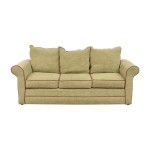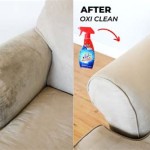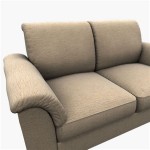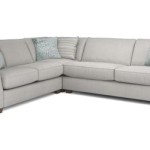Water Stains on Fabric Sofas: Causes, Prevention, and Removal
Water stains on fabric sofas are a common household nuisance. They detract from the sofa's appearance and, if left untreated, can lead to mold and mildew growth. Understanding the causes, preventive measures, and effective removal techniques can help maintain the sofa's aesthetic appeal and prolong its lifespan.
Water stains occur when water penetrates the fabric and interacts with the dyes or other substances within the fibers. The water spreads unevenly, leaving a darkened or discolored ring after drying. The visibility of the stain depends on several factors, including the fabric type, the water's mineral content, and the presence of other substances in the water.
Different fabric types react to water differently. Natural fibers like cotton and linen are highly absorbent and prone to visible watermarks. Synthetic fibers like polyester and acrylic are less absorbent but can still exhibit water stains, particularly if the water contains impurities. Blended fabrics exhibit characteristics of both natural and synthetic fibers, with their stain susceptibility varying based on the blend's composition.
Prevention is the most effective approach to managing water stains. Using coasters for drinks is a simple yet crucial preventative measure. This prevents direct contact between liquids and the fabric. Promptly addressing spills is equally important. Blot spills immediately with a clean, absorbent cloth to minimize water penetration into the fabric. Avoid rubbing, as this can spread the liquid and damage the fibers.
Protecting the sofa with a fabric protectant spray can significantly reduce its susceptibility to water stains. These sprays create a barrier that repels liquids, allowing them to bead up and be easily wiped away. Reapplying the protectant periodically, as per the manufacturer's instructions, maintains its effectiveness.
While prevention is ideal, water stains sometimes occur despite best efforts. Several methods exist for removing these stains, ranging from simple home remedies to professional cleaning. The appropriate method depends on the fabric type, the severity of the stain, and the available resources.
For light water stains on most fabric types, a simple blotting technique with a clean, damp cloth can be effective. Gently blot the affected area, working from the outside of the stain inwards to prevent spreading. Allow the area to air dry completely. Avoid using heat, as this can set the stain.
White vinegar is a natural cleaning agent that can be effective against water stains. Dilute white vinegar with an equal amount of water and apply the solution to the stain using a clean cloth. Blot gently and rinse with clean water. Allow the fabric to air dry thoroughly. Always test this solution on an inconspicuous area of the sofa first to ensure colorfastness.
Mild dish soap can also be used for water stain removal. Mix a small amount of dish soap with water to create a soapy solution. Apply the solution to the stain with a clean cloth, blot gently, and rinse thoroughly with clean water. Allow the fabric to air dry.
For stubborn water stains or delicate fabrics, professional upholstery cleaning is recommended. Professional cleaners have the expertise and equipment to effectively remove stains without damaging the fabric. They can also identify the fabric type and apply the most appropriate cleaning method.
Understanding the fabric composition of the sofa is critical for effective stain removal. Check the manufacturer's label or consult with a furniture professional to determine the fabric type. This information helps in selecting the appropriate cleaning solution and preventing unintended damage.
Regular vacuuming helps prevent dust and dirt from settling into the fabric, which can exacerbate the appearance of water stains. Regular cleaning also helps maintain the overall appearance and hygiene of the sofa.
Addressing water stains promptly is crucial for preventing them from setting and becoming more difficult to remove. The longer a stain remains untreated, the higher the likelihood of permanent discoloration.
Maintaining proper humidity levels in the home can also help prevent water stains. Excessive humidity can contribute to condensation, which can lead to water spots on furniture. Using a dehumidifier can help regulate humidity levels and prevent this issue.
While various methods exist for removing water stains, prevention remains the most effective strategy. By implementing preventative measures and addressing spills promptly, one can maintain the pristine appearance of a fabric sofa and extend its lifespan.

How To Remove Water Stains From Upholstery Fabric In 4 Steps

How To Remove Water Stains From A Fabric Sofa

Removing Water Stains From Upholstery The Honeycomb Home

Suffering From A Soaked Sofa How To Remove Water Stains Couch Masterclean Carpet Care

How To Remove Water Stains From Fabric

Removing Water Stains From Upholstery The Honeycomb Home

4 Steps On How To Deal With A Watermark Your Sofa Apple Clean

How To Get This Big Water Stain Out Of My Couch Hometalk

Removing Water Stain On Upholstered Chair

How To Spot Clean A Microfiber Couch Saving You Dinero








